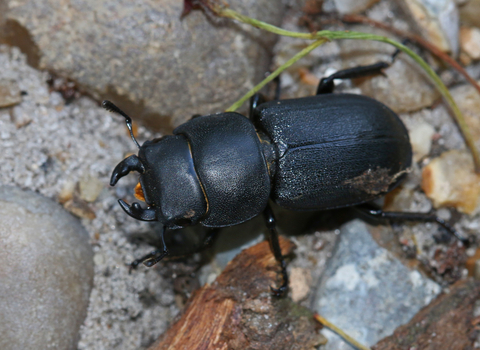
Lesser stag beetle ©Wendy Carter
Lesser stag beetle
The lesser stag beetle may be smaller than its famous cousin, but it is still a large beetle with large jaws. It can be seen in woods, parks and hedgerows during summer, and depends on dead wood.
Enw gwyddonol
Dorcus parallelipipedusPryd i'w gweld
May to SeptemberGwybodaeth am rywogaethau
Categori
Ystadegau
Length: up to 3cmCommon.
